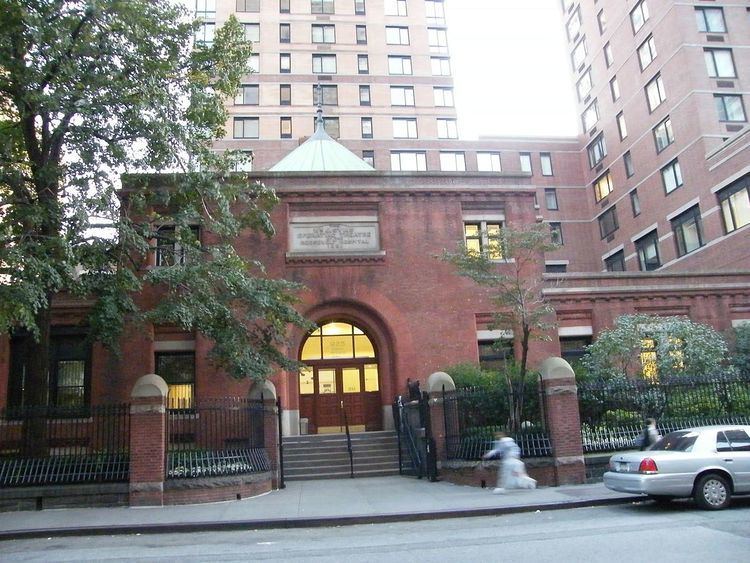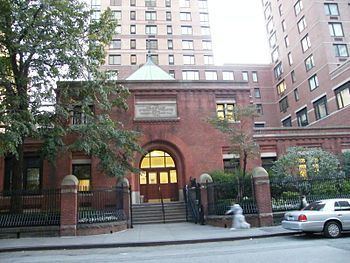Nationality USA Role Architect Name W. Smith | Known for Architect Other names W. Wheeler Smith Structures 361 Broadway | |
 | ||
Died 1908, New York City, New York, United States | ||
William Wheeler Smith, AIA, (c.1838-c.1908) professionally known as "W. Wheeler Smith," was an American architect and developer active in late-nineteenth- and early-twentieth-century New York City. His home office (used at the end of his career) was located at 17 East 77th Street, New York City. He previously occupied 971 Madison Avenue.
Contents

Smith was a self-made millionaire and noted philanthropist. "He started as an apprentice in an architect's office and worked his way to the front rank of New York architects."
The most valuable properties he owned were 3, 5, and 7 Wall Street, 84 Broadway, "which were valued by Mr. Smith at $3,500,000 and on which is a mortgage of $1,400,000, and 71 Wall Street, valued at $550,000. A few years before Mr. Smith's death he decided to bequeath the revenue from the building at 71 Wall Street to the Association of the Relief of Respectable, Aged, and Indigent Females, at Amsterdam Avenue and 104th Street, and he made such a provision in his will, (which was revoked by a later codicil)."
Works
His 1872 Gothic Revival design of St. Nicholas Collegiate Reformed Protestant Dutch Church, a Reformed Protestant Dutch church in Midtown, Manhattan, located on the northwest corner of Fifth Avenue and Forty-eight Street, built in brownstone was “distinguished by an elegantly tapered spire that, according to John A. Bradley in the New York Times, ‘many declare…the most beautiful in this country.’” The congregation dated back to 1628. After “considerable public debate,” the church was demolished in 1949 for the Sinclair Oil Building.
Smith designed the "long-since demolished College of Physicians and Surgeons" of Roosevelt Hospital. He continued his work at the hospital and in 1892 designed the Syms Operating Theater in Roosevelt Hospital, now a teaching amphitheater and the oldest part of the evolving hospital. "'The finest structure in the world for surgical operations,' according to Harper's Weekly," Funding was donated by William J. Syms, a retired gun merchant. It prominently features an 1892 glass roof that lights the operating theater with 184 seats. "The mildly Romanesque building was one where 'beauty of exterior has been sacrificed to utility of interior,' according to Harper's Weekly." Constructed of deep red brick, with granite trim, the building has little decoration, but its unusual great, semiconical skylight on top of a small brick box is memorable. The last operation occurred in 1941. It is still freestanding, even as the tower surrounds it and is now a New York City Landmark.
Many of his work was speculative. He designed the building at the southwest corner of Wall and New streets, erected 1899, on land leased from George R. Read for $65,000 annual rent, with original tenants The Equitable Trust Company, Federal Trust Company, and a prominent banking house. The same property had been reported four years earlier in 1895 as being mortgaged by Smith for $1,200,000 from the firm of Kuhn, Loeb, & Co., extending northward from the same corner property, had a frontage of 31 feet on Broadway, Union Trust Company Building, and a depth of over 106 feet to New Street. The frontage on the latter is nearly 59 feet and on Wall Street 39.5 feet. Taken in connection with the southeast corner of Wall Street and Broadway, it makes a compact spot. The corner is owned by the Benjamin D. Silliman (lawyer) estate, and there is supposed to be an understanding between the owners of the two parcels that both will act in unison. It was reported months ago that a large office building would be constructed on the combined plots. The property was reported owned by Smith in 1901 when the Hanover National Bank occupied its basement as its own Hanover National Bank Building headquarters were under construction on Nassau and Pine Streets. The lease negotiated by George R. Read, agent for the property. He held the building until his death and bequeathed it with the Eagle Building on Pearl Street to Columbia University but Columbia's trustees declined the gift and his estate executor's held on to it until 1916 when it went into foreclosure. The property was L-shaped and hugged what became the most expensive per square foot real estate plot in the world, sold in 1905 for $4 a square inch.
As a "contractor for foundation," he designed the 10-story brick and stone lofts at Nos 497 to 501 Park Street, (and Nos 37 to 41 Pearl Street) in 1901 for owner Harry C Hollenbeck of 441 Pearl Street. The foundation was John J Tucker of 37 West 12th Street and the project cost $400,000.
Private life
He was married to Catherine Hever Brewer (d.Mar 16, 1916). He married his wife in the Dutch Reformed church that he designed. He frequently appeared in the society pages and was a member of several boards and councils, including the Council of New York University.
At the time of his death at age 70, he had no children nor relatives apart from his wife. As a condition of his will, Smith "left a fortune to St. Luke's Hospital." He had a "three-million-dollar estate" through his real estate investments that his wife decided she would not challenge provided she was left with $700 a month instead of $200,000 a year. An additional collection of small bequests to servants and distant relatives did not exceed $20,000. Her decision allowed the hospital to build a sanitarium for poor convalescents. Smith had wanted to design the memorial he would enable but was too ill to do so.
